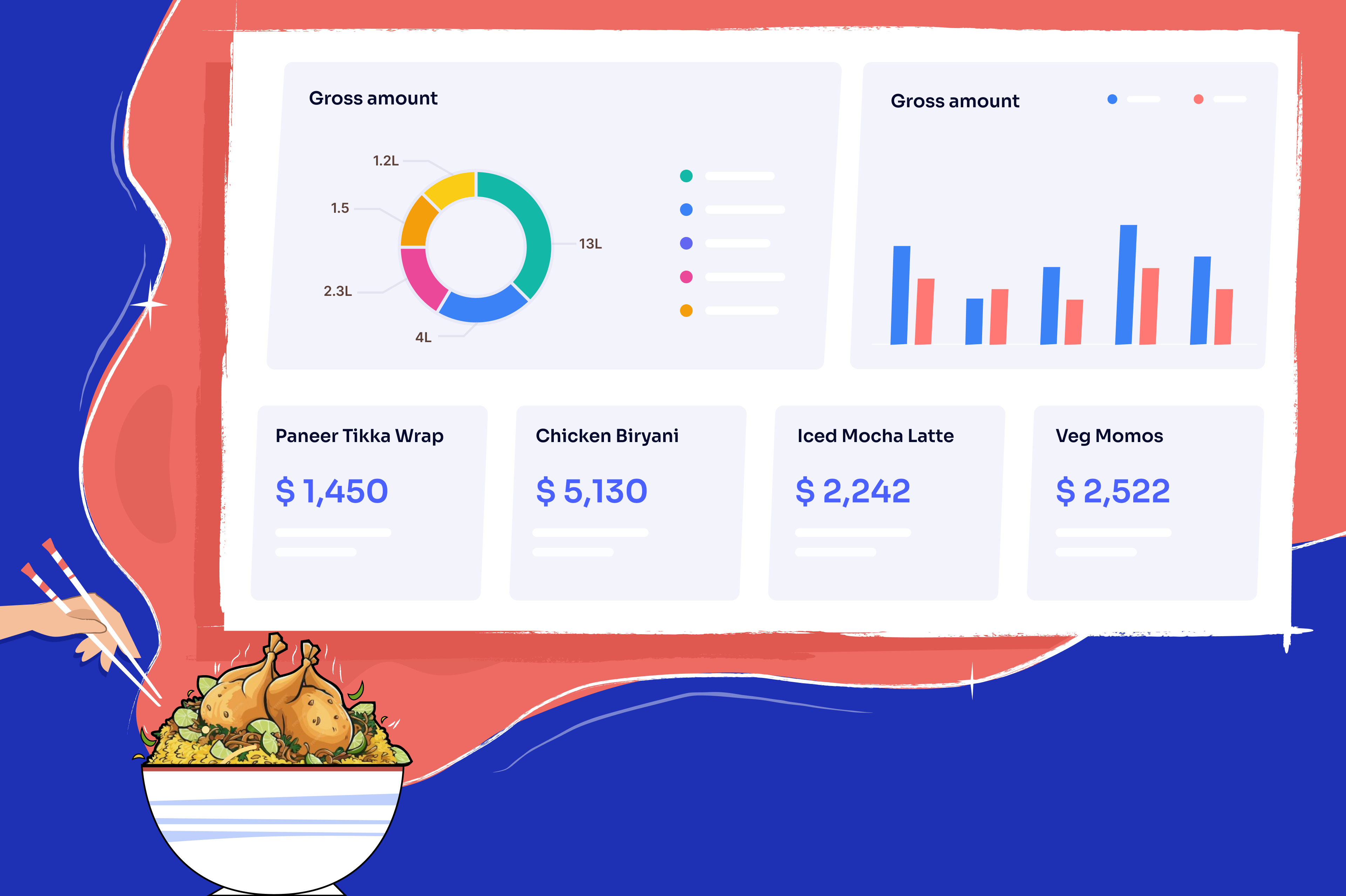In the razor-thin margin world of Quick-Service Restaurants (QSRs), finance teams are routinely bogged down by fragmented payment streams, delayed settlements, and manual reconciliation, hindering their ability to act as strategic partners.
For QSR operators, cash flow isn’t just a number to monitor; the circulatory system keeps supply, labor, expansion, and vendor commitments alive. Margin pressure is omnipresent.
For example: Devyani International, the operator of KFC in India, saw Q1 net profit rise to ₹301.1 million versus ₹117.6 million year-over-year. Yet, its EBITDA margin contracted to 18.3% from 20.5% because expenses jumped by 43%.
This illustrates how margin compression can occur even with top-line growth, forcing finance teams to treat cost control as a non-negotiable discipline.
Globally, the QSR market is projected to reach USD 1.93 trillion by 2032, growing at a healthy 9% CAGR. In India alone, the sector is set to touch USD 43.5 billion by 2030, fueled by online orders, aggregator platforms, and expanding footprints across Tier-2 and Tier-3 cities.
Yet behind this growth lies a persistent bottleneck that eats into margins and cash flow.
Given the scale dynamics, even small inefficiencies in financial operations multiply quickly across thousands of transactions and locations. For QSR finance leaders, delayed or opaque account receivables is one of the challenges that can quickly metastasize into strategic risk.
The QSR Operating Model: Speed, Scale & Complexity
Cloud kitchens and QSR chains already operate on razor-thin margins, and rising operating costs can easily erode profitability. To stay competitive and sustain growth, they can’t afford to let any revenue opportunity slip. But with high transaction volumes, disjointed technology stacks, and manual reconciliations that take too long, finance teams often struggle to get accurate transaction-level visibility. As a result, many end up guesstimating receivables from aggregator platforms, leaving significant revenue on the table.
Moreover, QSRs run on scale and speed. Millions of micro-transactions flow every day across POS terminals, delivery platforms, mobile apps, kiosks, loyalty programs, and aggregators. In many geographies, multi-unit and franchise structures further complicate payment remittance, P&L roll-ups, and cash flows per location. In this environment, any delay, mismatch, or write-off bites directly into already tight margins.
Key Challenges for the Finance Function
- Fragmented inflows and data silos: Payments from food aggregators, banks, POS systems, and loyalty platforms often arrive in different formats and timing.
- Heavy manual reconciliation: Teams spend days matching transactions, chasing shortfalls, and resolving disputes.
- Liquidity blind spots: Food aggregator settlements may still follow weekly cycles and create uncertainty about cash availability.
- Revenue leakage: Discrepancies or errors result in unclaimed amounts or write-offs.
- Lack of real-time visibility: Without up-to-date receivables data, forecasting becomes guesswork.
According to industry data, QSRs typically lose 1–2% of topline revenue to unresolved discrepancies and chargebacks, a staggering amount when scaled across thousands of stores.
For CFOs, every dollar delayed in receivables is a dollar less in reinvestment or expansion. These challenges reduce the finance function to reactive, tactical work rather than proactive strategy.
Impact of Inefficient AR on QSR Finance Operations
Inefficient AR processes lock up working capital and weaken financial agility. CFOs lose the ability to optimize vendor terms, accelerate expansion, or fund marketing initiatives. Limited visibility into location- and brand-level performance, along with settlements that may fall short of what’s actually due, only amplifies these cash flow challenges and pressures margins further.
In many cases, QSRs lean on short-term credit lines to plug daily gaps. Over time, finance becomes an operational burden instead of a growth driver.
Where AR Automation Changes the Game
Smart AR automation platforms like Bluecopa, are transforming how QSR finance teams operate. Automation tools reconcile receivables at a transaction level and in real time. They integrate and unify data from multiple sources like POS, aggregator portals, wallets, and bank statements, and more. This means finance teams can instantly detect missing payments, flag short-settlements, and close books faster.
With AI-driven matching engines, even complex deductions (like promotional offers, refunds, or delivery-partner fees) are automatically identified and categorized. What previously required hours of manual cross-checking is now completed in seconds, ensuring that no transaction, however small, slips through. AR Automation tools like Bluecopa are purpose-built for high volumes, multi-channel operations like QSRs:
- Automated transaction matching: Ingests data from POS, aggregators, wallets, banks, loyalty systems, and automatically aligns payments to invoices.
- Unified visibility dashboards: Real-time view of outstanding receivables, settlement timelines, and location-level inflows.
- AI-driven anomaly & dispute detection: Flags mismatches, underpayments, or missing remittances proactively.
- Predictive cash flow forecasting: Enables finance leaders to forecast collections, flag shortfalls, and strategize working capital.
- Scalability without headcount: Handles spikes (during promotions, festivals, store rollouts) without a linear increase in staff.
And the impact is profound:
- 80–90% reduction in manual effort
- 99.9% reconciliation accuracy
- Faster month-end close cycles
- Improved cash-flow predictability and control
From Data Deluge to Financial Intelligence
Automation doesn’t just simplify reconciliations; it unlocks intelligence. CFOs can view receivables aging by brand, store, or aggregator. They can analyze deduction patterns and negotiate better terms with delivery partners. They can forecast cash flows more accurately, helping operations and procurement teams plan.
In an environment where margins are razor-thin, often less than 10% at the store level, such visibility can make or break profitability. In QSR, speed is not just for the kitchen; it’s for every corner of your enterprise, including finance. With AR automation, finance teams can stop chasing receivables and start steering strategy.
Discover how Bluecopa can transform finance operations in your QSR enterprise.
Book a demo today.



.jpg)
